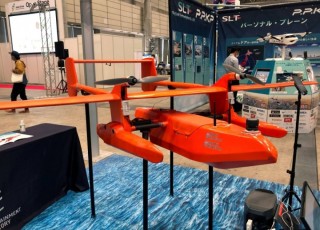Loading
Search
▼ Japan Exploring Drone Production Capabilities For Military Aid Program
- Category:Other
Tokyo has begun looking into the capabilities of Japanese firms to manufacture different dual-use drones for export as a growing number of countries involved in Japan’s military aid program express interest in the unmanned systems.
“Both ... partner and candidate countries have been showing increasing interest in Japanese drones and related equipment, so we have begun looking into this,” a government official told The Japan Times on condition of anonymity, referring to the official security assistance (OSA) program.
As a result, the foreign and industry ministries have begun asking local firms about their capabilities in a bid to determine which systems Tokyo could potentially provide under the next OSA tranche in the fiscal year from April and beyond.
However, the official stressed that it would be premature to say whether drones — of any type — would be part of the next tranche, as the assets under consideration are still the subject of ongoing talks between Tokyo and countries receiving OSA.
“We are very interested in discussing the equipment needs of the candidate countries, including drones and related equipment, but nothing has been decided at this point,” the source added.
Whether for use in the air, on land or at sea, armed forces across the globe have begun integrating drones into their units in the hope that these increasingly capable and often autonomous systems can give them an edge.
The increased interest is likely also due to many countries, including Japan, drawing lessons from the war in Ukraine about how drones can act as force multipliers while minimizing human losses and operating continuously for long periods.
For fiscal 2025, which starts April 1, the Foreign Ministry has requested ¥8 billion ($52.5 million) for the OSA framework.
If approved by parliament, this would mark a 60% — or ¥3 billion — year-on-year increase, as Tokyo seeks to strengthen the security and deterrence capabilities of “like-minded” countries amid growing concerns over the regional security environment.
The expected increase in OSA spending would be the third since the program was launched in 2023 with an initial ¥2 billion budget, marking a break with Tokyo’s previous policy of avoiding the use of development aid for purposes other than disaster relief.
Among the up to nine countries being considered for the third OSA tranche are Malaysia, Indonesia, the Philippines and Mongolia, all of which are already beneficiaries, as well as Papua New Guinea.
As OSA funds increase, so will Japan’s efforts to boost the number of countries it assists, with those already enrolled in the program expected to receive larger grants going forward.
The latest developments come as the Foreign Ministry announced Monday that it has reached a deal with Mongolia to provide that country’s air force with a ¥1.3 billion grant for air traffic control radars and related equipment under this year’s OSA tranche.
The grant comes as the Japanese and Mongolian air forces have conducted defense cooperation and exchanges in recent years, including a capacity-building project on air traffic control.
While the OSA’s main emphasis is on bolstering maritime security, Tokyo says it wants to support Mongolia in its efforts to avoid overreliance on its immediate neighbors — China and Russia — especially as Ulaanbaatar has adopted a “third neighbor policy” designed to strengthen relations with other nations.
- February 11, 2025
- Comment (0)
- Trackback(0)


